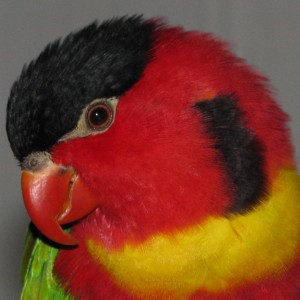

Join BirdNote tomorrow, November 30th!
Illustrator David Sibley and actor H. Jon Benjamin will face off in the bird illustration battle of the century during BirdNote's Year-end Celebration and Auction!
Most birds have the capacity to make red feathers, even those that lack red plumage. This discovery was revealed by scientists who studied Red-factor Canaries — a “hybrid” bird that is part canary, part Red Siskin, like this one. Both species have the “redness gene.” But Red-factor Canaries have a thousand times more red pigment in their skin. And why? Red-factor Canaries inherited the siskin’s “genetic switch” that turns on the redness gene in their skin. So just having the gene is not enough: if the genetic switch in the skin is turned off . . . no red feathers.
Today’s story brought to you by the Bobolink Foundation.
BirdNote®
How Birds Become Red
Written by GrrlScientist
This is BirdNote.
[Song of the Northern Cardinal, #105598]
Many birds — like the Northern Cardinal — use the color red as a visual signal. When you’re trying to attract a mate or scare a rival, the redder you are, the better.
But most birds have the capacity to make red feathers, even those that aren’t red. It’s thanks to the action of a gene identified in intensely red pet birds known as Red-factor Canaries.
[Song of the Red Siskin, #63550]
The Red-factor Canary is a hybrid – part canary, part Red Siskin. Researchers found that both those species have the “redness gene.” But Red-factor Canaries have a thousand times more red pigment in their skin. [Song of the Red Siskin increases through the next paragraph, almost to the point of annoyance] The difference? Red-factor Canaries inherited the siskin’s “genetic switch” that turns on the redness gene in their skin. So just having the gene is not enough: if the genetic switch in the skin is turned off ... no red feathers.
[1-2 seconds of total silence]
Although most birds have the redness gene, only some are red. Its presence suggests this gene has another role — it produces red pigments in the eye that enhance color vision. Vision that helps a bird recognize a signal — a flash of red perhaps — in a mate or a rival.
[Song of the Red Siskin, #63550]
For BirdNote, I’m Michael Stein.
###
Song of the Northern Cardinal provided by The Macaulay Library of Natural Sounds at the Cornell Lab of Ornithology, Ithaca, New York. 105598 recorded by Geoffrey A. Keller, 63550 recorded by Paul A. Schwartz.
BirdNote’s theme music was composed and played by Nancy Rumbel and John Kessler.
Producer: John Kessler
Executive Producer: Sallie Bodie
© 2016 Tune In to Nature.org December 2016/2018/2021 Narrator: Michael Stein
ID# plumage-02-2016-12-16 plumage-02
http://www.forbes.com/sites/grrlscientist/2016/05/20/how-birds-became-r…
https://www.sciencedaily.com/releases/2016/05/160519130102.htm
http://phys.org/news/2016-05-genes-enable-birds-red.html
Goldsmith, 1984


